Can you put glass in the oven without it breaking or cracking? In this post, I will explain how to safely use glass in the oven so that you don’t end up with cracked or broken cookware.
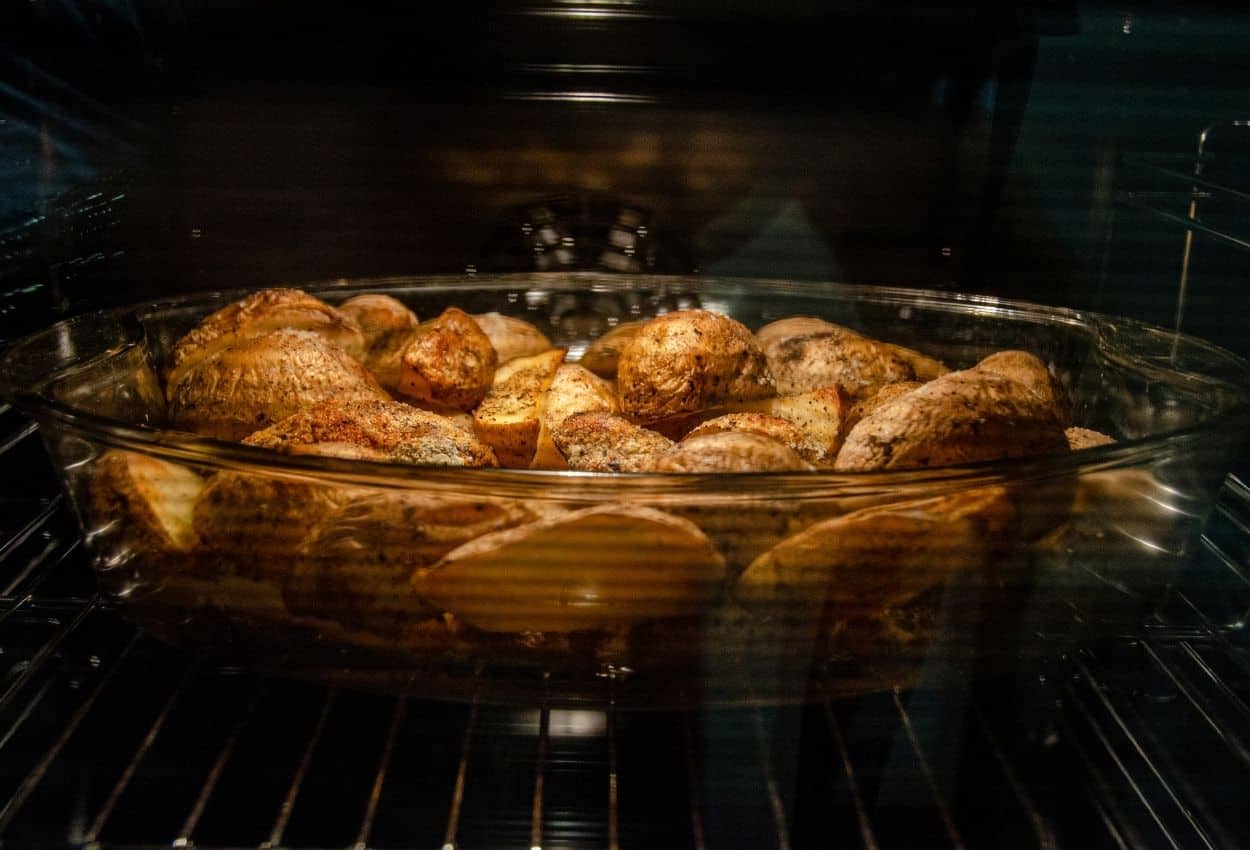
Glass pans are designed specifically to be used in the oven. Think casserole dishes and pie dishes. However, not all glass is heat resistant. You can safely put any glass that is labeled oven-safe in the oven without fear that it will break if you follow a few rules of thumb.
Placing any type of cookware in a high heat situation such as an oven, toaster oven, or microwave oven should be done with caution. If you place the wrong type of material in the oven the result can be rather dangerous.
While glass that is labeled oven-safe can be put in the oven, what about other glass? Maybe you want to take your leftovers from the fridge that are stored in a glass container and reheat them in the oven. Or maybe you have a glass serving dish that you’d like to warm in the oven before serving. Are these situations safe?
The simple answer is NO. You shouldn’t place any glass in the oven that is not labeled oven-safe.
For more helpful tips, be sure to check out my posts, Can you put aluminum foil in the air fryer? and Can you freeze scones?
What Causes Glass to Crack or Break in the Oven?
There are a few conditions that cause the glass to break or crack in the oven.
Rapid Temperature Shifts
Glass can break or shatter in the oven due to thermal shock. What is thermal shock? Thermal shock is the result of severe temperature changes. For example, if you take a glass container from the refrigerator, and place it in a preheated oven, the quick temperature fluctuation can cause the glass to crack or break.
Putting Non-Tempered Glass in the Oven
While tempered glass is generally safe to use in the oven non-tempered glass is not safe to use in the oven. Most glass is non-tempered. For example, drinking glasses, glass dishes, and glass serving ware are non-tempered. Glass has only been tempered if it is labeled oven-safe.
Heating the Glass to a High Temperature
While it is generally safe to use tempered glass that is labeled oven-safe in the oven, you should proceed with caution. Even oven-safe glass has a temperature limit. Be sure to look at the labeling on your bakeware, or review the manufacturer manual to check the temperature limit for your cookware.
How to Avoid Glass Breaking in the Oven
- Avoid Drastic Temperature Shifts: If you are warming food placed in a glass container that has come from the refrigerator, allow the glass to come to room temperature before placing it in the oven.
- Only Use Tempered Glass: Be sure that any glass you place in the oven is tempered. If it is not tempered it will surely crack or break in the oven. Non-tempered glass is not meant to be put into high heat situations. Make sure the glass you put in the oven is labeled “oven-safe.” It is labeled as such you can rest assured that it is tempered glass.
- Avoid High Heat: Most glass should not be heated above 350 F. Some types of glass can be heated higher, so be sure to check your glassware for the recommended heat range.
- Inspect Glass for Cracks or Scratches: Before you place glass in the oven, inspect it for any cracks or breaks. Glass that is already slightly cracked, or chipped can more easily crack and break when put into the oven at high heat.
- Add Water When Cooking Dried Foods: When heated dry foods naturally release water during the cooking process. However, the water that the food releases can be cold, while the glass can be hot, causing a temperature shift that will crack the glass. If you add a small amount of water to the bottom of your glassware, the water will heat as the glass heats, and the water released from the food won’t cause a drastic change in temperature.
Benefits of Using Glass Cookware in the Oven
With all of the stipulations, you may be wondering if it’s worth putting glass in the oven. There are several benefits of using glass. Here are a few…
- Non-Toxic: Glass is a non-toxic cookware material. Other types of cookware have been known to release toxic chemicals when heated. Avoid toxins from being released into your food by using glass.
- Easy to Clean: Glass is relatively easy to clean. All you need to do is fill your glass container with some warm water, and dish soap, and allow it to sit a bit before scrubbing clean. All the food residue will easily lift from the glass leaving a shiny surface.
- Store and Reheat: Many types of glass cookware come with lids, making it easy to transfer leftovers directly into the refrigerator. Remember to avoid breaking, make sure that you allow the glass to come to room temperature before transferring it to the refrigerator. When you place your glass back in the oven, let the glass come to room temperature before transferring it to the preheated oven.
- Great for Serving a Crowd: If you are hosting a dinner using glass is ideal. Although glass takes longer to cook than metal bakeware, it retains heat longer. This means when you are serving dinner to guests your food will remain hot for a longer period of time.
- Clear Cooking Surface: One of the great benefits to cooking with glass is that you can see the contents of your cooking efforts to better determine if it’s cooked all the way through. Other cookware only allows you to see the top surface which makes it difficult to know if the rest of the layers are cooked.
Best Glass Cookware for the Oven
When it comes to choosing glass cookware to use in the oven you have many options available to you. Choose bakeware that best serves your needs. I recommend investing in a baking set that comes with corresponding lids like this 8-Piece Deep Glass Baking Dish Set. It comes in 4 sizes with corresponding lids. It’s microwave, oven, dishwasher, and freezer safe. It’s made of high-quality borosilicate glass.
Another great option is the Anchor Hocking Bakeware Set. It is a 15-piece set made from pre-heated tempered glass. This set comes in a variety of glassware sizes with lids!
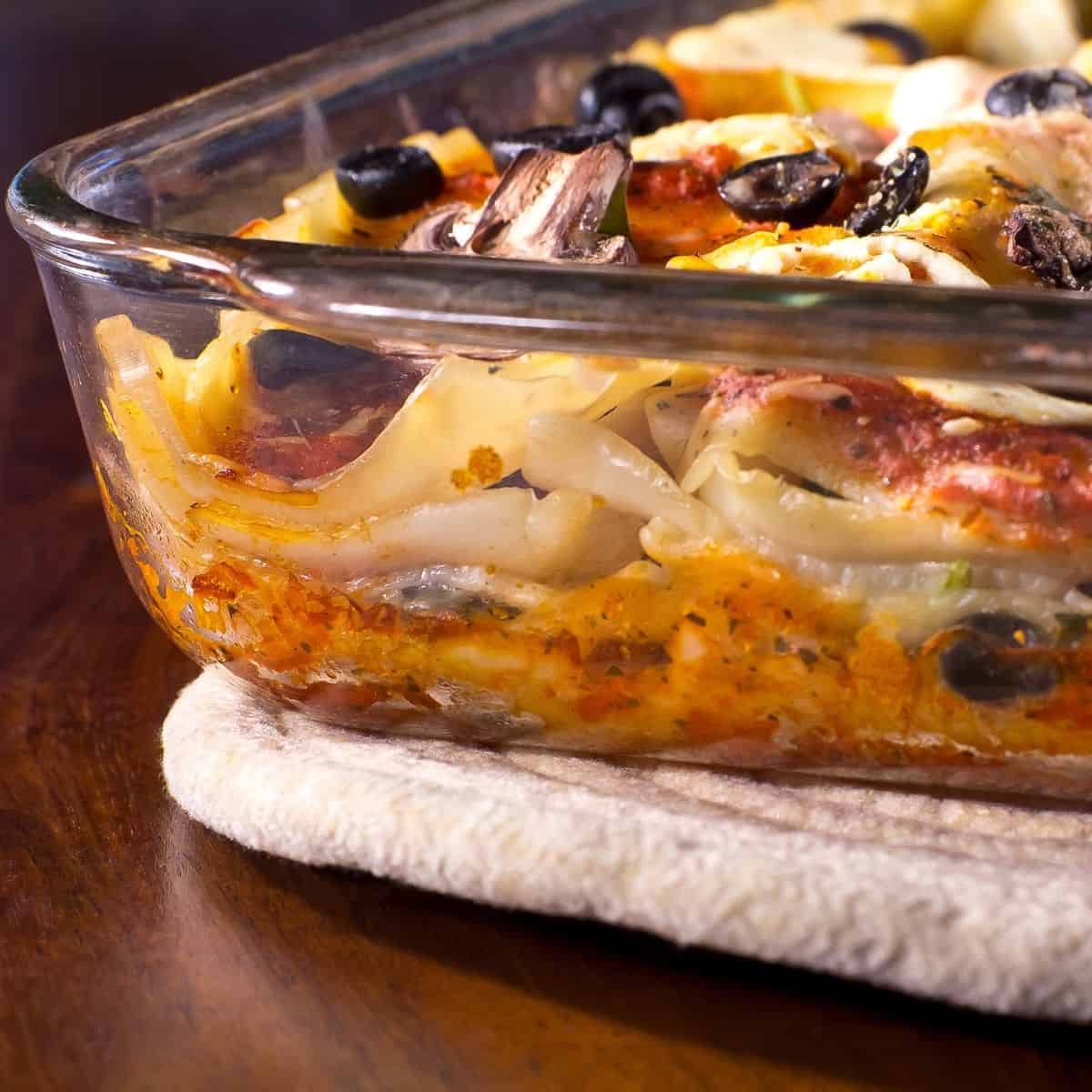
Final Thoughts
You can put oven-safe glass in the oven but always do so by noting the highest temperature that is safe for the glass. Also be sure to examine the glass for any cracks or scratches, as these cause weakness in the glass and can cause a further crack or break. Avoid extreme temperature changes. If the glass is coming from the refrigerator allow it to come to room temperature. However, not all glass can go in the oven. If the glass is not tempered do not put it in the oven. Don’t put any glass in the oven that is not labeled oven-safe.
More Helpful Cooking Tips!
Please comment below if you found this article helpful or have any additional questions. You can also follow me on Instagram, Pinterest, and Facebook for more family-friendly vegan recipes!
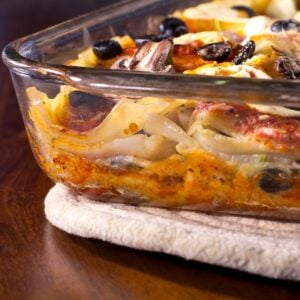
Can you put glass in the oven?
Equipment
Ingredients
- 1 oven safe glass cookware
Instructions
- Select glassware that is labeled oven safe.
- Check your glassware for any cracks, scratches, or breaks.
- Preheat your oven before adding your glassware. If taking the glass from the refrigerator to reheat leftovers, allow the glass to come to room temperature before adding to the oven.
- Check your glassware for the max heating temperature for safety. In most cases don't heat hotter than 350 F, although some glass is safe to heat at a higher temperature.
Notes
- The glass must be labeled oven safe.
- Never put non-tempered glass in the oven.
- Avoid extreme temperature shifts.


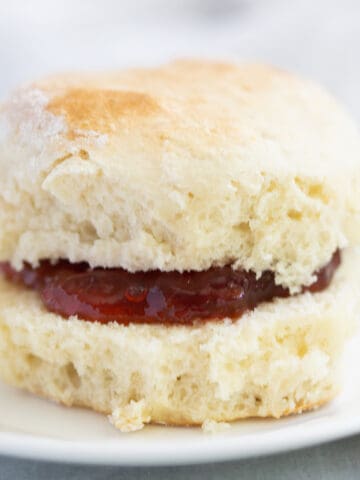
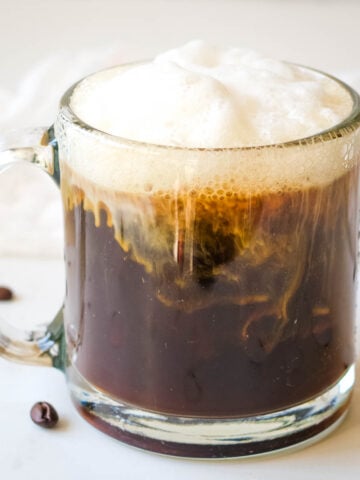
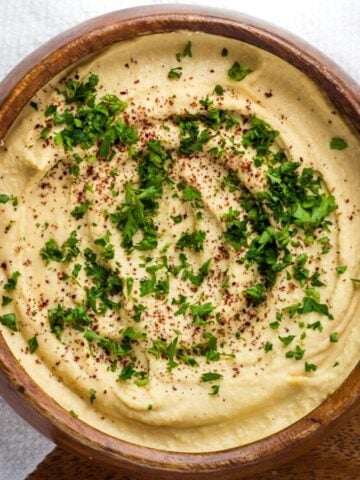
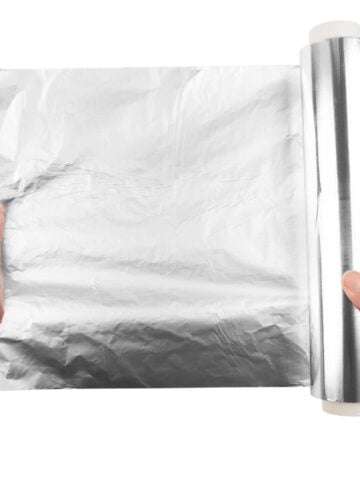
Leave a Reply